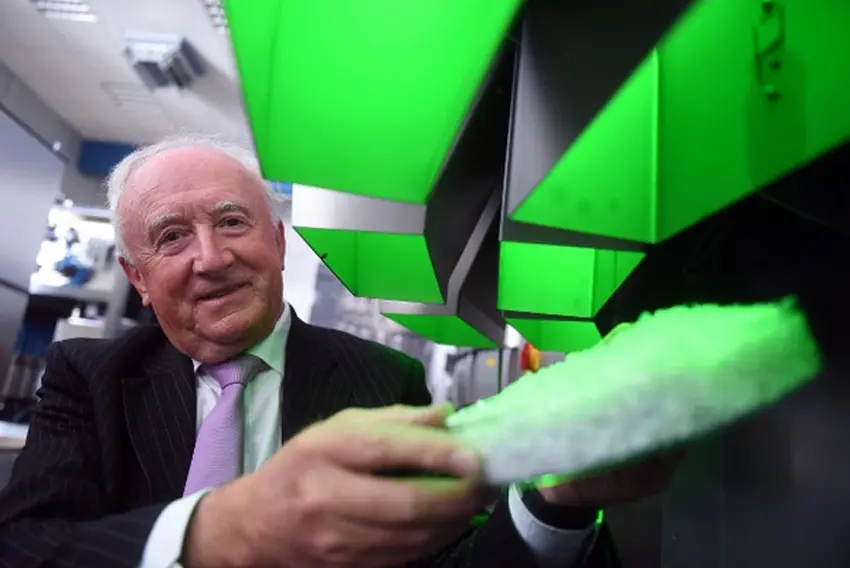Germany – From afar, the Powersort 360 produced by German firm UniSensor more closely resembles an alien spaceship than a piece of modern-day recycling equipment. Its sleek, round design and assortment of flickering lights are certainly a showstopper at the K2016 ‘ so are the machine’s specifications; it can sort black plastics at 10 tons per hour thanks to laser spectroscopy.
The unique design of UniSensor’s 360 unit combines eight high performance sorters in a single machine, arranged in a circle. This set-up grants the system an effective scanning width of four metres, while up to eight different sorting tasks can be programmed simultaneously.
‘We have been working on this machine for almost fifteen years, and this is its world premiere,’ UniSensor founder Professor Dr Günther Krieg told Recycling International at the K Show in Düsseldorf yesterday. He affirms that the ‘sci-fi’ appeal of the sorting solution is proving to be an entertaining icebreaker at the German event.
The Powersort 360’s patented detection system excites the molecules in the plastics with a ‘powerful’ laser light source, thus analysing the light spectrum that the individual parts emit, regardless of colour. ‘This is our answer to recyclers faced with a growing stream of black plastics and dark grey plastics – these dark hues are very popular in the car plastics as well as consumer electronics market,’ Professor Dr Krieg observes.
In fact, the system’s ‘extremely high’ signal processing speed ensures that one million spectra can be generated and evaluated every second, explained Professor Dr Krieg, who is a member of Karlsruhe University of Applied Sciences technology community. A prototype unit of the sorting system is currently running at the school for education purposes, he stated.
While the machine takes up fairly little space owing to its compact circular design, it caters to a wide range of materials. This includes; ABS, PS, PC-ABS, PP and PVC measuring between 15-75 mm in size.
‘As you can imagine, a lot of visitors are curious to find out more about the machine,’ noted Prof Dr Krieg. ‘It’s not like anything they have seen before. Our neighbours even tried to take a sneak peek underneath the cover while we were setting up the booth,’ he added with a laugh. ‘Based on this enthusiasm, I am confident that all those years of engineering and hard work will pay off.’
A detailed review of the K2016 Show will be published in the December issue of Recycling International.
Don't hesitate to contact us to share your input and ideas. Subscribe to the magazine or (free) newsletter.



